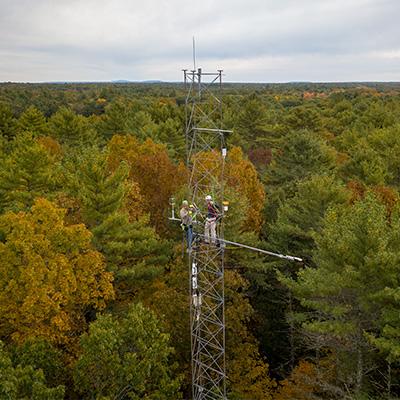Cracking the Code of a Northern Forest Carbon Cycle: An Integrated Analysis Using Data, Models and Assessment of Uncertainties

This study resulted in one of the most complete carbon budgets for a northern hardwood forest ecosystem. Understanding forest carbon cycles informs priorities related to climate change, resource management, and environmental policy. In the Northern Forest region, scientists and decision makers need the ability to quantify net balance between carbon uptake and loss (carbon sequestration), knowledge of carbon fluxes within individual components of ecosystems and associated uncertainties, and analytical tools to project carbon cycle estimates over time and diverse landscapes. Active exchange of information is important among scientists, stakeholders, and members of the public most closely tied to the region’s forested landscapes.
NSRC researchers advanced the understanding and ability to predict northern forest growth, carbon dynamics, and response to climate. They conducted field measurements in a 100-year-old forest at the Bartlett Experimental Forest in New Hampshire’s White Mountains. Their measurements supplemented CO2 flux data from instruments on a 110-foot tower. The resulting dataset provided estimates of annual carbon sequestration of 120 to 133 grams per square meter. Variation in carbon uptake by trees was related to the nitrogen content of foliage, length of time between soil thaw and leaf-out, and amount of diffuse sunlight versus direct radiation. The most important sources of uncertainty involved belowground processes such as amount and fate of carbon allocated to mycorrhizal fungi. Aging forests in the Northern Forest region still represent a moderate carbon sink, and reducing uncertainties will require increased attention to belowground processes.
Researchers discussed the relevance of this research with 300 stakeholders and members of the public at a “science café.”
